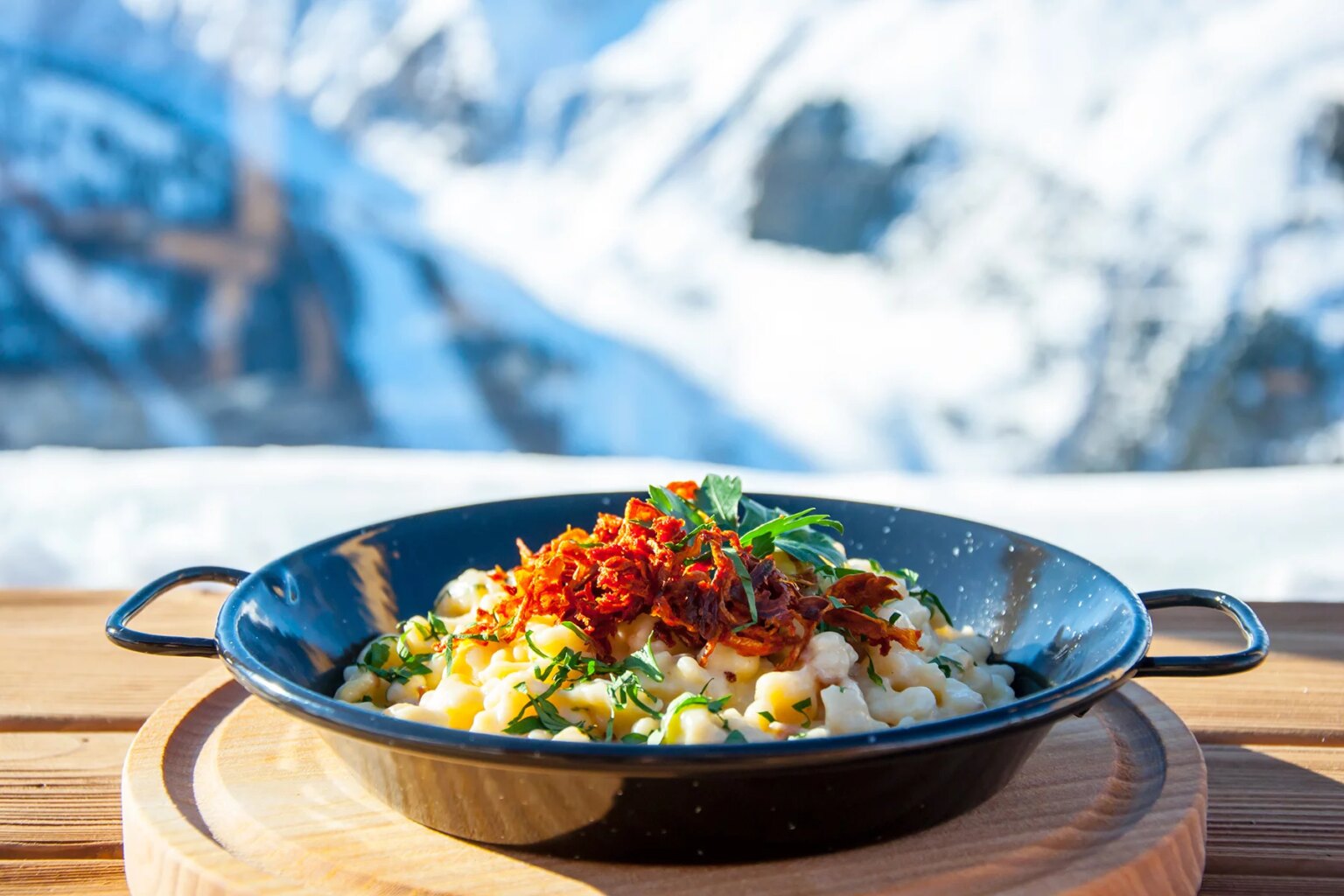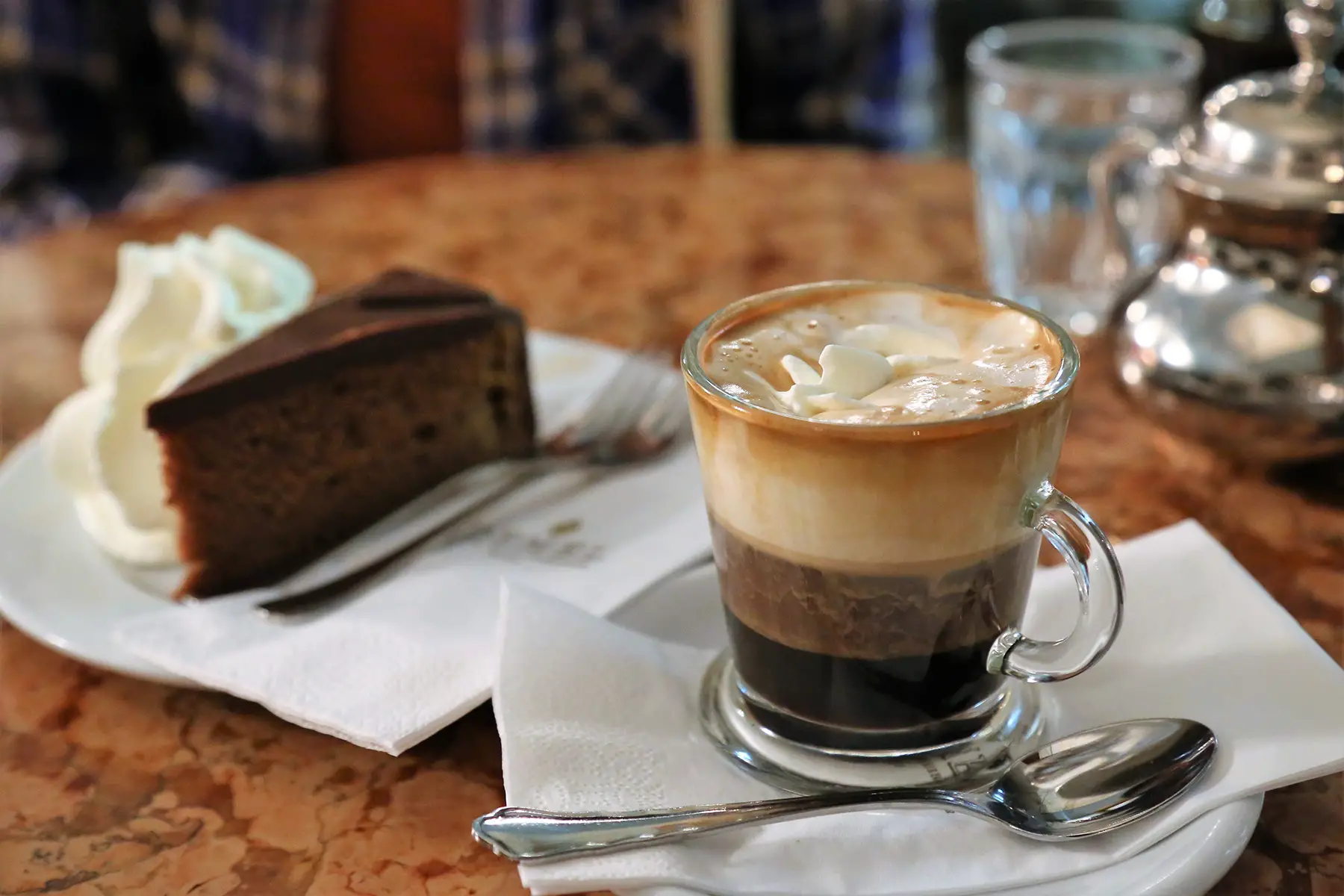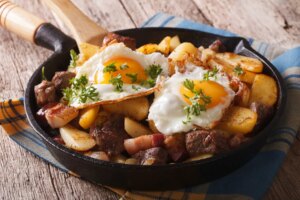Aside from being world-famous for its breathtaking natural landscapes and rich cultural heritage, Austria is revered for its heart-warming cuisine. Neighboring countries such as Germany, Italy, and Switzerland heavily influence the nation’s favorite dishes.
What’s more, Austria’s culinary offerings have continued to diversify with the arrival of more expats and immigrant communities.
Therefore, those moving to the beautiful alpine country can look forward to discovering a tantalizing selection of gastronomical delights that are sure to satisfy their palates. And with so many spectacular Austrian beers and wine on offer, they will have plenty to wash it down with, too.
Get an idea of what culinary treasures are in store by reading the following sections:
HelloFresh
Want to create some classic Austrian dishes in your own kitchen? HelloFresh is a leading meal-kit provider that delivers innovative recipes from Austria and around the world straight to your doorstep. Choose from a range of recipes and let HelloFresh transform mealtime for you and your family.
An overview of Austrian cuisine
From Schnitzel to Sachertorte and everything in between, there is much to discover in the beautiful alpine nation of Austria. Like many European countries, Austria is a melting pot of cultures and traditions, and its rich and diverse cuisine reflects this. Interestingly, many of the country’s hallmark dishes that are known and loved today actually originated on foreign soil. Austria’s most famous dish, the Wiener Schnitzel, for instance, most likely came from northern Italy. Its heart-warming Goulash originated in the Hungarian plains, and its iconic Würstchen (sausages) were delicacies in southern Germany long before they reached Austrian dining tables.
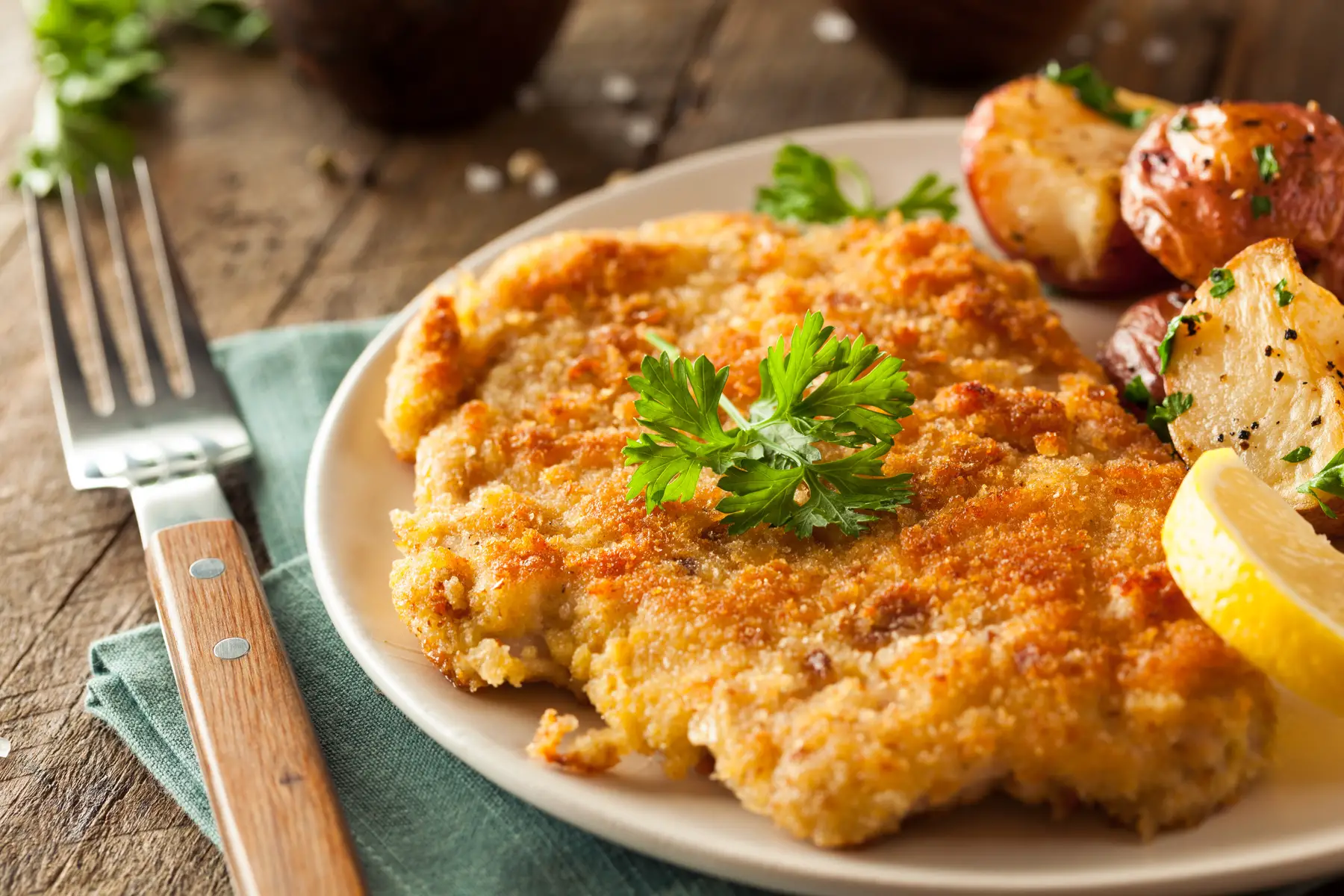
And just as the population in Austria has continued to grow and incorporate more religions, cultures, languages, and ethnicities, so has its culinary offerings. Delve a little deeper into this melting pot of international cuisines, and you will soon discover significant regional variations, too. Needless to say, expats moving to the alpine country certainly won’t be short of delicious options to satisfy their appetites.
The Austrian diet
They say that indulgence comes at a price, and this is certainly true of Austrian cuisine. Indeed, it is no secret that Austrians appreciate delicious but rather unhealthy fare. The Austrian diet is heavily rich in calories and dairy; indeed, many of the nation’s favorite dishes are full of meats, cheeses, salt, and saturated fats. And we haven’t even gotten to the countless decadent – and calorific – pastries and desserts yet!
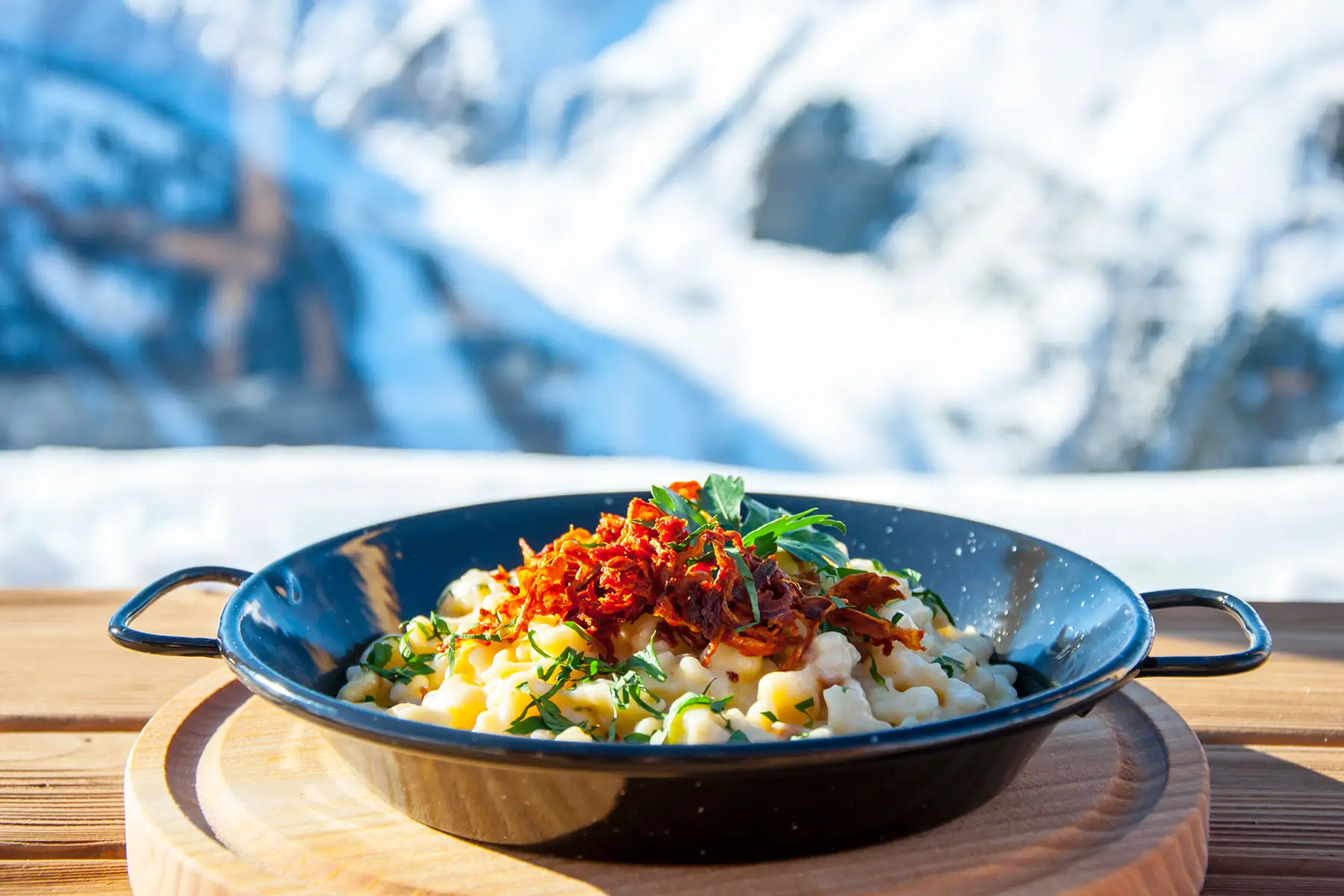
So while discovering Austrian’s culinary treasures might be a delight, it certainly won’t be kind to your waistline – or your health. With this in mind, you might want to limit your indulgence; especially if you want to avoid developing any number of diet-related health problems that the country is currently tackling.
For instance, while Austria ranks 13th out of 163 countries in the 2019 Bloomberg Global Health Index for factors such as life expectation, physical movement, and child malnutrition, it also consumes more saturated fatty acids and salt than the Food and Agriculture Organization of the United Nations (FAO) recommends. Moreover, an estimated 18.3% of adult women (aged 18 years and over) and 21.9% of adult men in Austria are currently living with obesity.
However, just like anywhere in the world, diet is all about choice, and fortunately, the younger generations of Austrians are becoming more health-conscious. Moreover, there are always healthier variations of classic Austrian dishes to explore – so all is not lost.
Popular ingredients in Austria
As you might expect, there are several staple ingredients that you are likely to come across in any Austrian kitchen. And you will soon discover that these key ingredients can be found in many of the country’s famous dishes.
Pork
To say that Austrians love their meat would be a huge understatement. And while chicken, beef, turkey, and goose are all popular choices, pork is used extensively in Austrian cuisine; and in a variety of ways. It can be served as cold cuts of ham, smoked bacon (Speck), or cut sausages as part of breakfast. Pork belly can be added to Bauernschmaus; a traditional Austrian dish served with Sauerkraut and dumplings. Pork can also be combined with beef to create Fleischlaberln; delicious mixed meat patties that are served with creamy mashed potato (Kartoffelpüree).

Interestingly, Austrian butchers use a number of special cuts of meat. This includes the juicy Fledermaus, which is German for “bat” due to its shape that resembles the creature. Many of the country’s favorite sausages, including the Frankfurter, Debreziner, and Burenwurst, consist of a mixture of pork and beef. Needless to say, if you appreciate the flavor of this versatile meat, you certainly won’t be going hungry in Austria.
Beef
Beef is another key ingredient that takes center stage in Austrian cuisine and features in several of the country’s most popular dishes. This includes Austria’s national dish, Tafelspitz; a hearty serving of beef in broth traditionally served with apples and horseradish. And, of course, the country’s iconic Wiener Schnitzel consists of a thin, breaded, pan-fried veal cutlet. The mouthwatering recipe for gravy-soaked Rindsgulasch (beef goulash) also calls for succulent portions of beef. Feeling hungry yet?
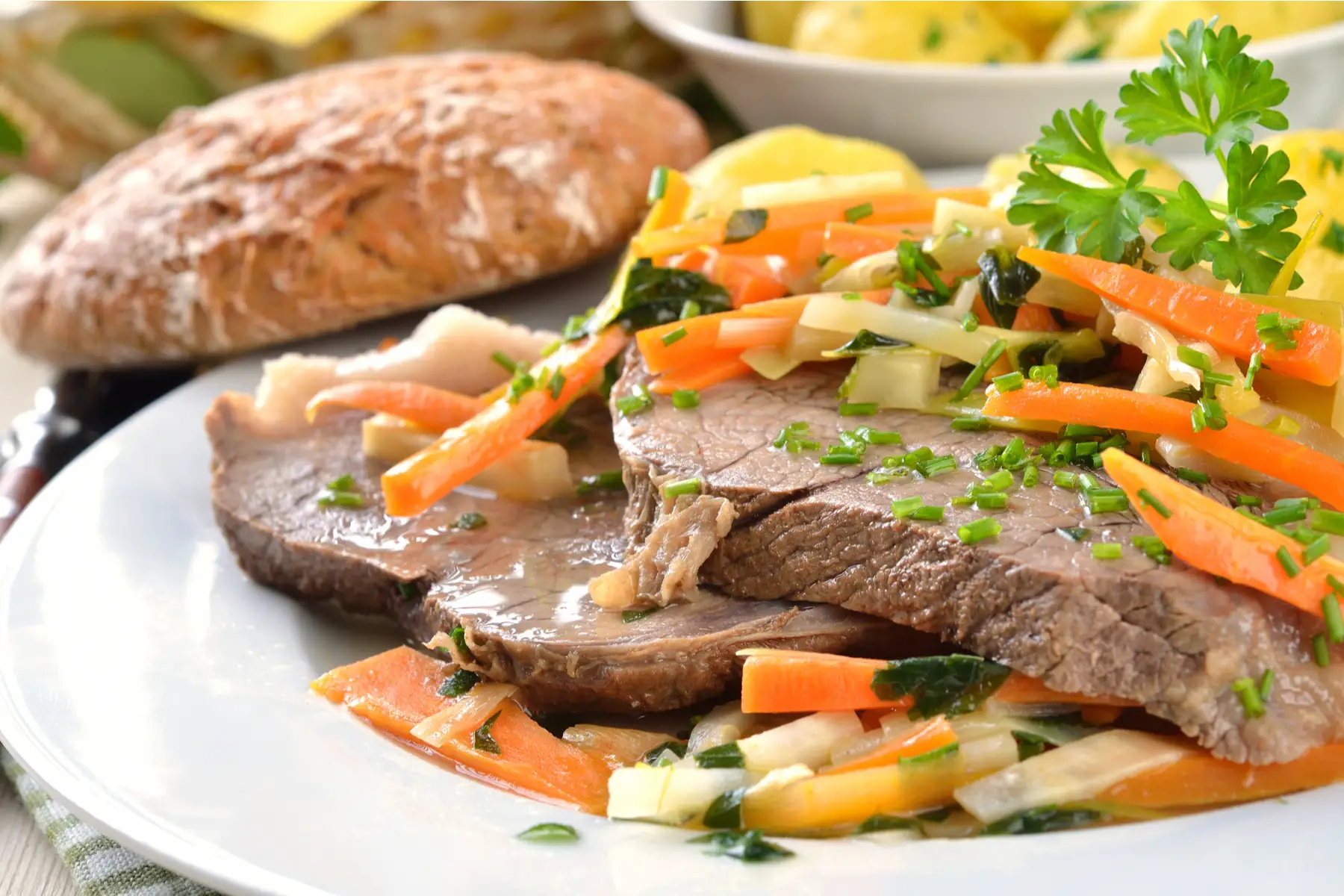
Chicken
Aside from red meat, chicken is a key ingredient that appears in a variety of popular dishes throughout Austria. This includes Backhendl; a Viennese version of spicy fried chicken, Chicken Paprikash (paprika chicken); a popular spicy, creamy dish of Hungarian origin, and Schnitzel, which can see the traditional veal replaced with poultry. So whether you prefer crispy chicken drumsticks or tender parts of the bird, there are plenty of tasty recipes to whet your appetite.

Goose
Goose holds a special place in the heart of many Austrians. The intensely-flavored dark meat is mainly eaten in celebration of St. Martin’s Day which falls on 11 November. During this time, families and friends gather to feast on Martinigansl; a specialty dish that consists of roast goose stuffed with chestnuts and dried plums served with red cabbage and potato dumplings. This succulent dish is a very old tradition in Austria and a way of remembering St. Martin – the Bishop of Tours. You can read more about his story here. Austrians also enjoy goose as part of their traditional Christmas Day dinner along with stuffing and red cabbage.
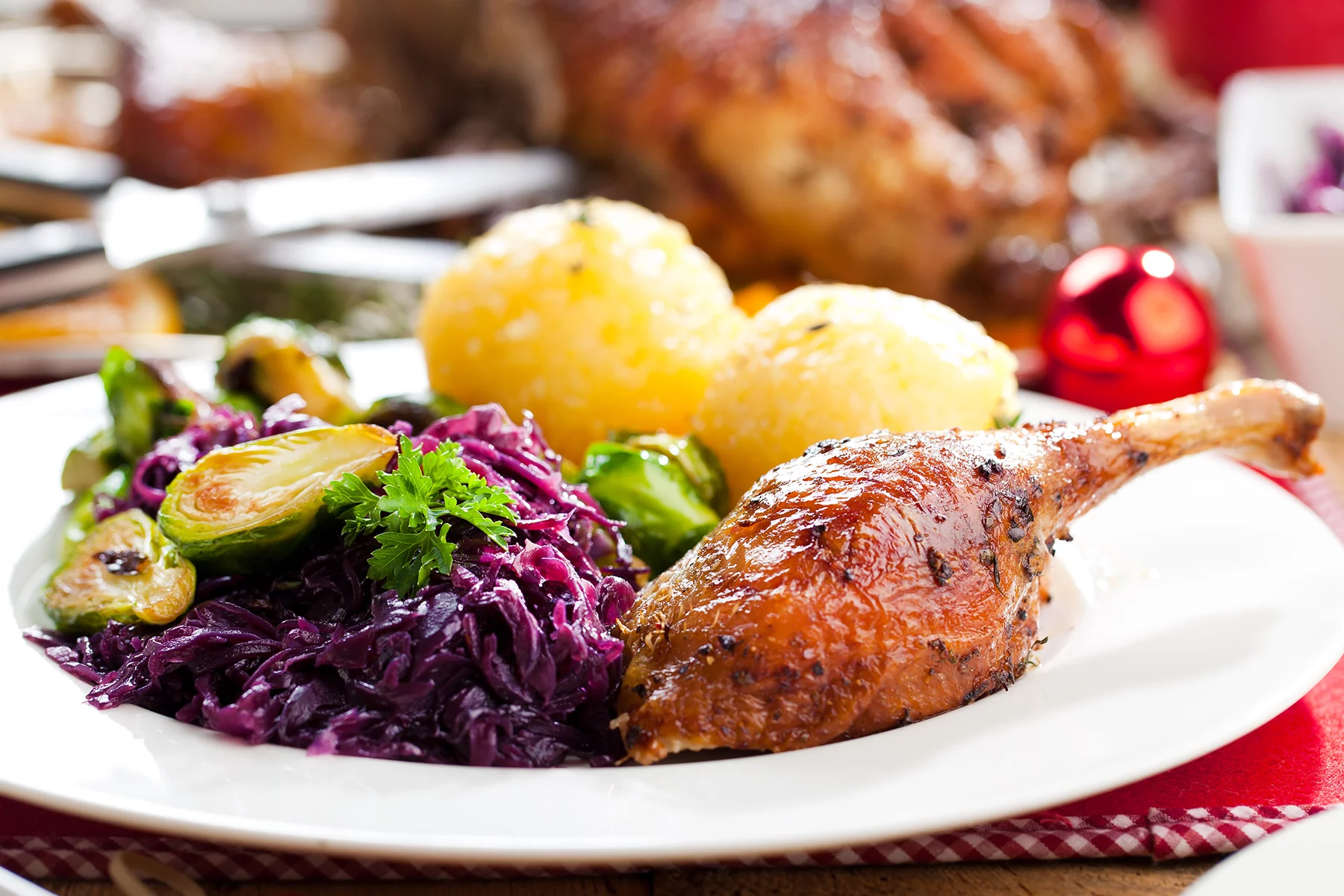
Fish
Austria is home to many lakes and rivers that produce a variety of fish that feature in local recipes. Trout, grayling, Danube salmon, and Arctic char, for instance, can be found in the crystal clear waters of Tyrol. Some of the most popular fish dishes in the country include Pannonian Fish Soup; which originated in Burgenland, and Forelle Müllerin (“trout miller’s wife”); which is served with salad and buttered potatoes and parsley. Interestingly, the traditional Austrian Christmas Eve dinner consists of carp fried in butter, served with a range of vegetables and potatoes.
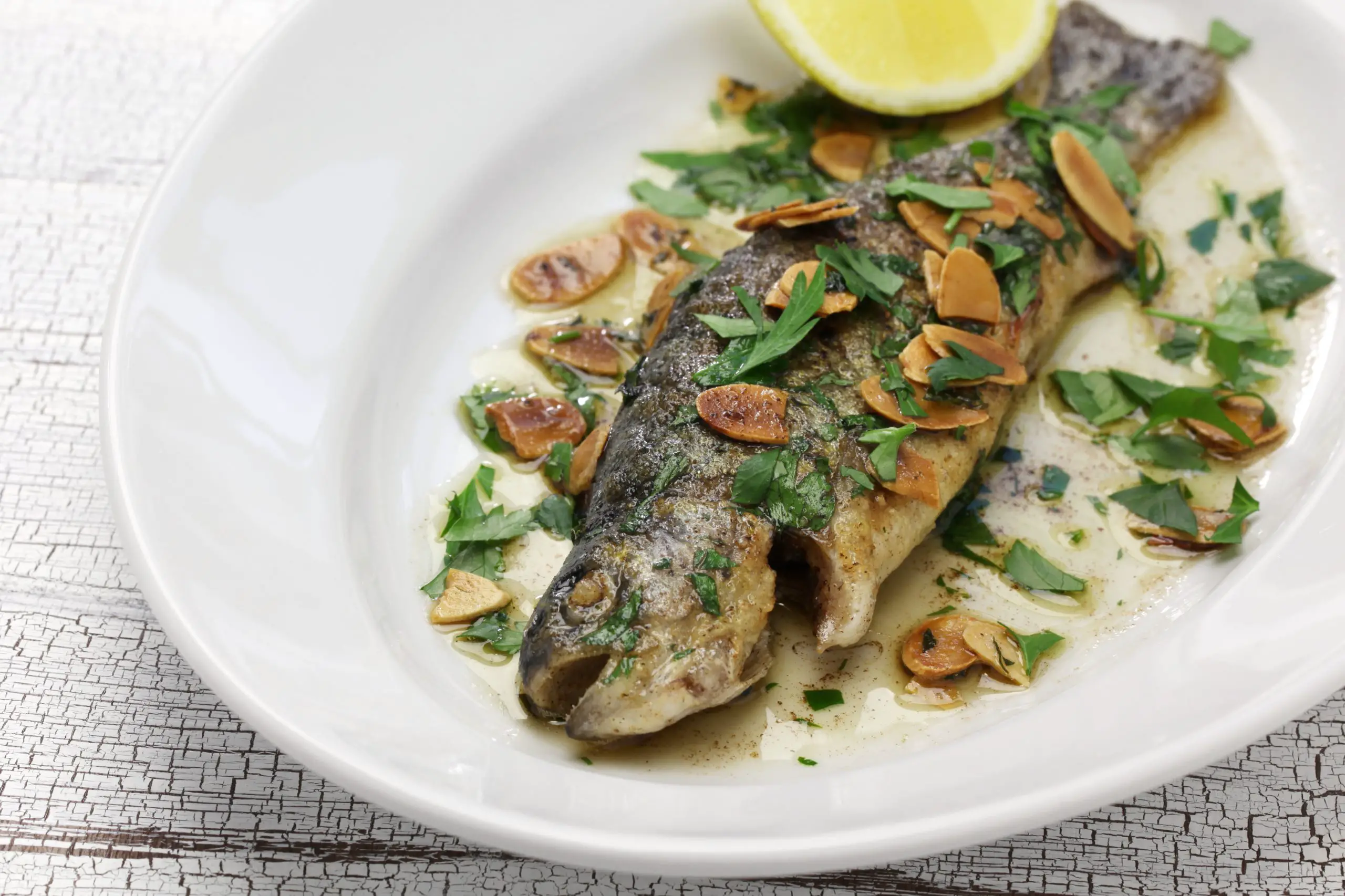
Vegetables
While Austrians certainly enjoy their fix of meat and dairy produce, they do manage to incorporate a lot of healthy veg into their diet. Although technically a fruit, tomatoes are the most commonly consumed in Austria. According to Statista, the country ate around 256,000 tonnes of tomatoes in 2018. However, this is perhaps not surprising as so many Austrian recipes call for a rich tomato sauce base. The staple Tomatensalat (tomato salad) also appears frequently on dining tables in Austria.

Potatoes are another staple in Austrian cuisine. Indeed, the wholesome spud forms the foundation of many popular recipes including Erdäpfelgulasch (potato goulash), Fleischlaberln, and Erdäpfelsalat (Austrian-style potato salad). Other popular vegetables include onions, carrots, cucumbers, and bell peppers. Leafy greens such as lettuce, cabbage, and asparagus (in the springtime) are also common throughout the country. Interestingly, people often eat gherkins with sausages, meat dishes, and alongside sandwiches.
Fruit
As well as veg, Austrians also enjoy their sweet fruits. According to Statista, apples were the most consumed fruit in 2019. Around 186,000 tonnes of them were eaten, followed by 113,000 tonnes of bananas, 49,000 tonnes of oranges, and 37,000 tonnes of pears. Apricots and cherries also make the list of popular fruits in Austria. Indeed, the Wachau Valley near the Danube River is famous for its apricots, as well as its wines. Each July, a Spitzer Marillenkirtag festival takes place in honor of the Wachau apricot and visitors savor a number of apricot products; including syrups, nectars, jams, and even beer.
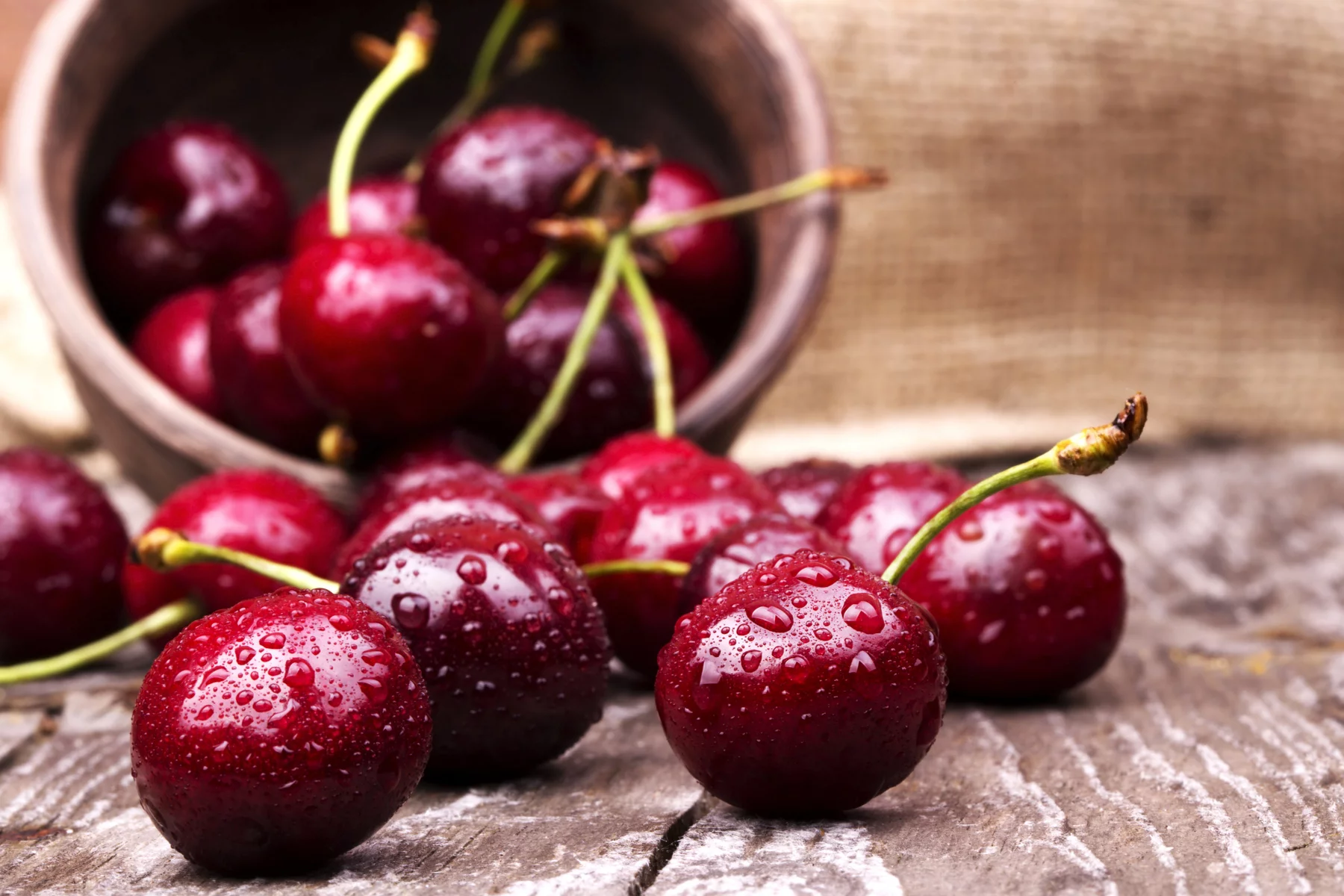
Meanwhile, the Leithaberg vineyard region in the far north of Burgenland is famous for producing Leithaberger Edelkirsche. These sweet cherries come in many varieties, most of which have thin skins and are bright red or brown. Austrians typically use them in desserts, chutneys, jams, and spirits, as well as accompaniments to fish, lamb, and poultry dishes.
Cheese and dairy products
Given Austria’s sweeping Alpine pastures and large appetite for all things dairy, it is hardly surprising that the country produces a wide variety of cheeses made from cow, sheep, and goat milk. Dachsteiner, Arlberger, and Gmundner Bergkäse are just some of the specialty cheeses that come from the country. Needless to say, cheese lovers will have the time of the lives browsing the many cheese shops and markets. Furthermore, they will no doubt enjoy delving into a bowl of gooey Käsespätzle (cheesy noodles).
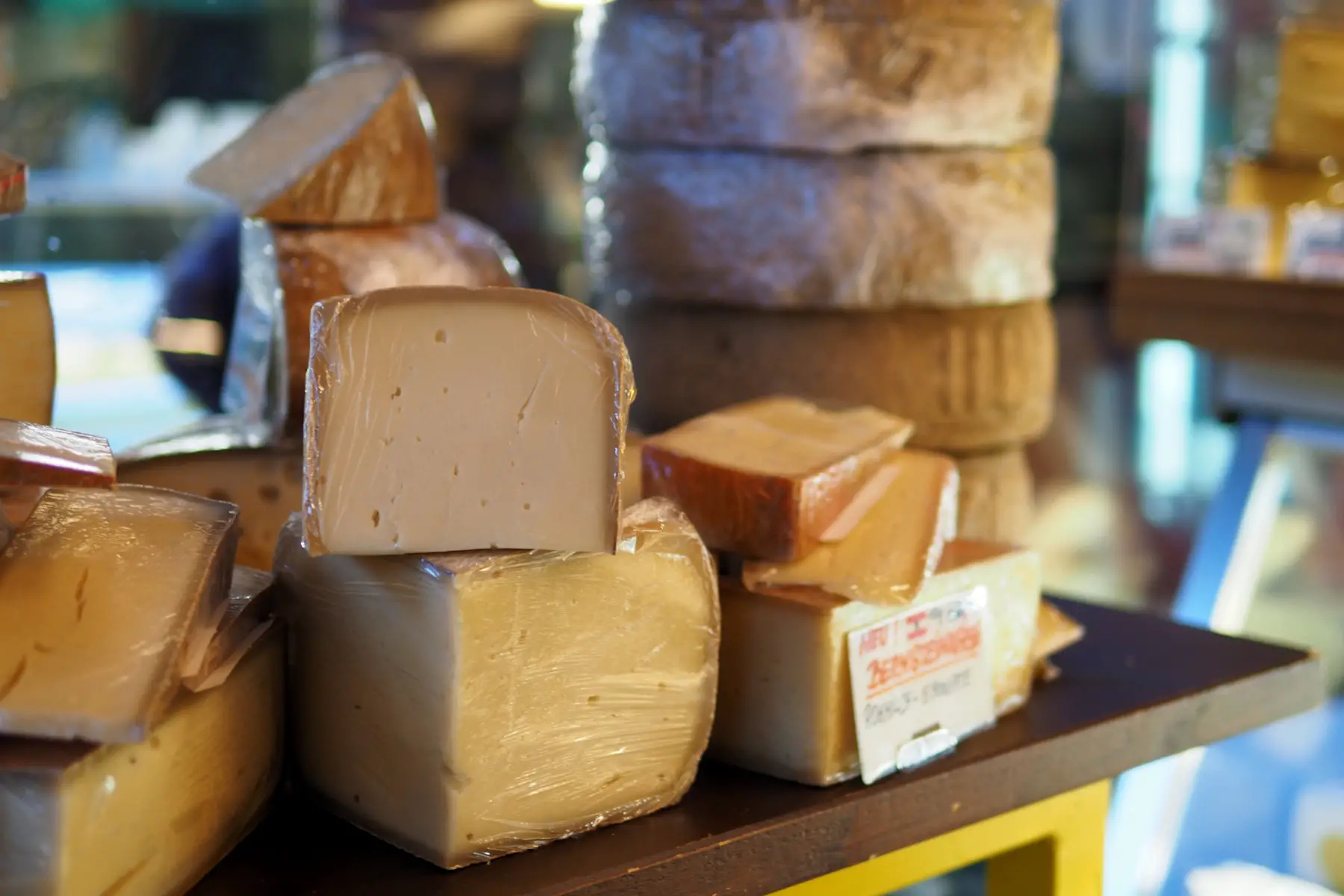
Aside from cheese, Austrians like to incorporate a variety of creams into both their sweet and savory dishes. They particularly enjoy Topfen, an Austrian curd cheese that has a similar flavor to cream cheese. This dreamy ingredient features in recipes for Käsekuchen (cheesecake), Topfenknödel (Austrian dumplings), creamy dips, and even Strudel. Many Austrian desserts, cakes, and flavored coffees are also served with a generous helping of whipped cream or heavy cream (Schlag). The iconic Sachertorte and Apfelstrudel, in particular, wouldn’t be complete without it.
Carbohydrates in Austria
Surprisingly, the intake of metabolizable carbohydrates in Austria is 50% lower than the recommended guidelines. In fact, only school children reach the recommendation with a mean 52% of energy stemming from carbohydrates. It appears that Austrians are eating too much fat, and not enough carbohydrates and fiber. With this in mind, you may want to stock up on whole grains, legumes, and quinoa and resist the temptation of too many pastries and cakes.
Herbs, sauces, and condiments in Austria
Austrian cuisine calls for a number of staple herbs and sauces that are commonly found in kitchens across the country. Horseradish, for instance, features in many sauces, dips, and fish dishes. Similarly, people often sprinkle freshly chopped chives on soups, meats, and potato salads to add flavor. Other popular herbs and spices include caraway seeds, parsley, dill, and white pepper.
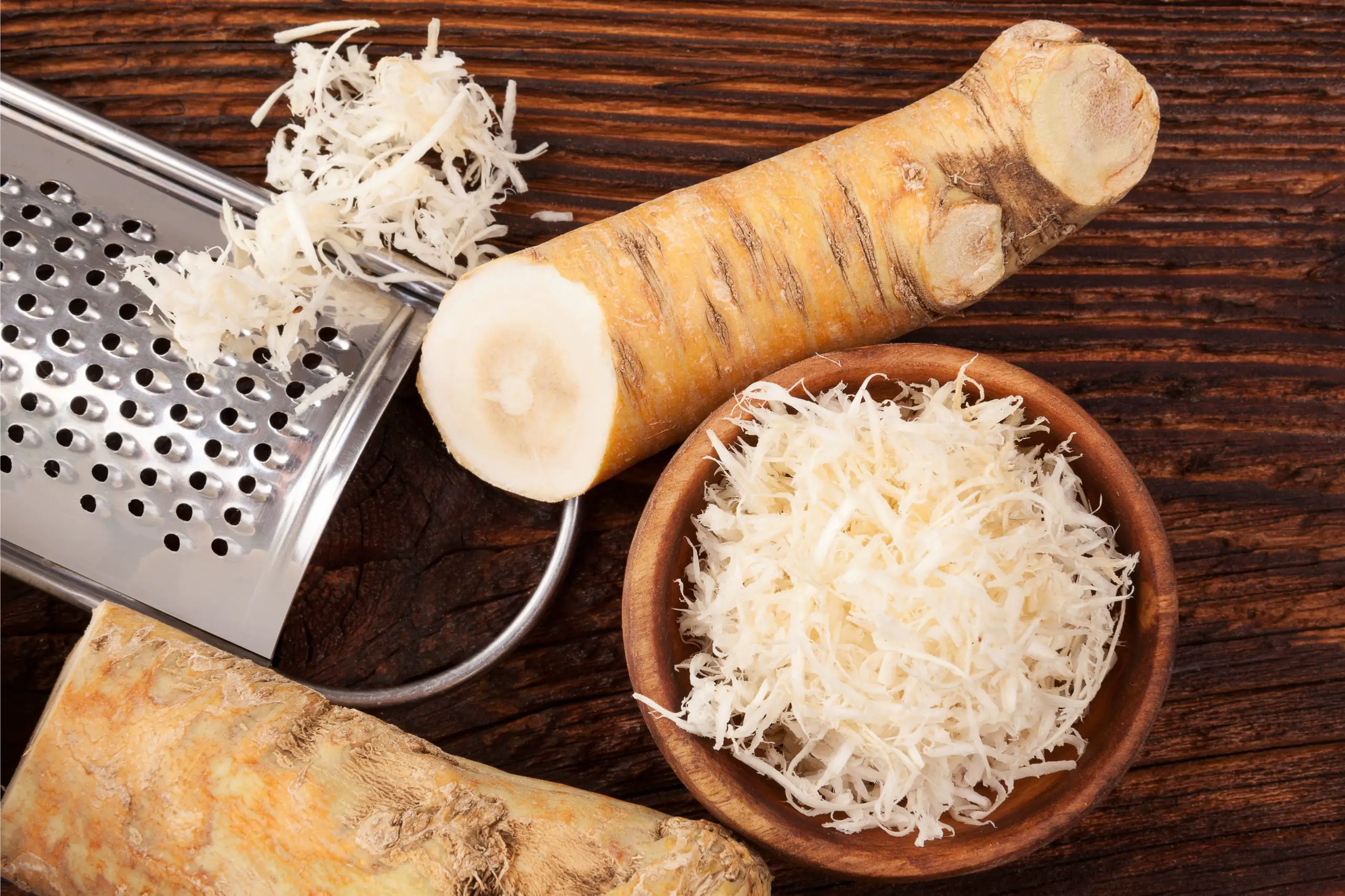
Mustard is also a staple in many Austrian refrigerators and there are a variety of flavors ranging from sweet to spicy. People often add a dollop of spicy tarragon mustard, for example, to sausages and other meaty dishes. Of course, you can also eat sausages with ketchup or curry powder for a spicy kick. You can make sweet mustard, meanwhile, by adding sugar, apple sauce, or honey. Mautner Markhof is a household brand of mustard and other condiments that you will likely come across in Austrian kitchens.
Famous Austrian dishes
Fancy tucking into some authentic Austrian cuisine? Then why not give one of these famous dishes a try; or better yet, try making them yourself by following these simple recipes.
- Wiener Schnitzel – thin cutlets of veal lightly coated in breadcrumbs and deep-fried in butter or lard until golden brown, served with a wedge of lemon and a side of potato salad, cucumber salad, or French fries.
- Wiener Würstchen – an iconic Vienesse sausage made from a mixture of pork and beef encased in sheep’s intestine. People enjoy this as a snack or a main dish, with Sauerkraut, radishes, and Austrian potato salad
- Käsespätzle – Austria’s answer to macaroni and cheese, this hearty dish consists of chewy egg noodles (Spätzle) in a creamy Emmentaler cheese sauce topped with butter caramelized onions.
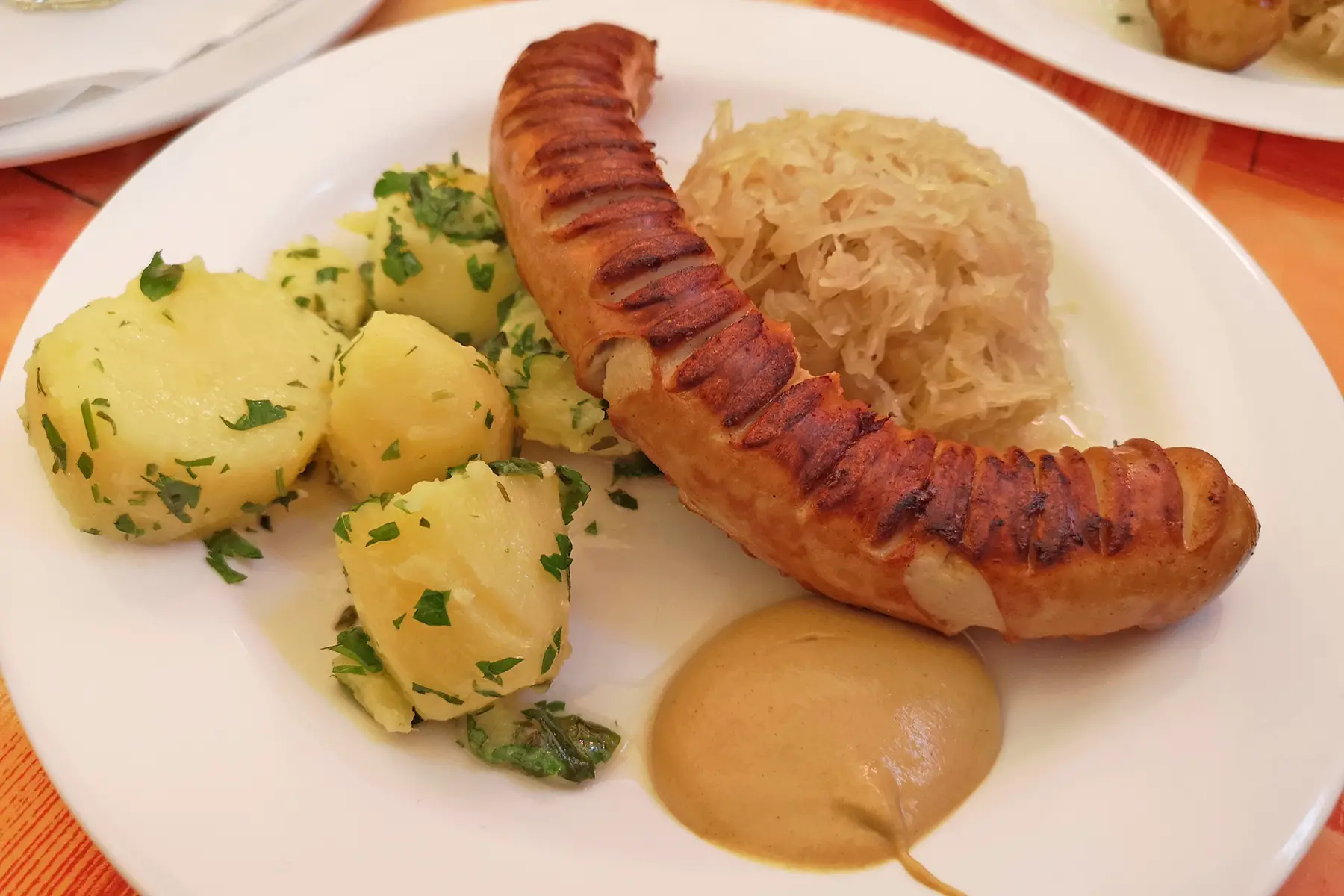
- Tafelspitz – a classic Viennese dish made by boiling veal in a spicy broth with root vegetables. Austrians traditionally serve it with potatoes, carrots, and a creamy apple-horseradish and chive sauce.
- Erdäpfelgulasch – ideal for vegans, this heart-warming stew potato goulash comprises potatoes, onions, and gravy, and was originally from Hungary. Some people like to add smoked sausage to give it more flavor.
- Fleischlaberln – delicious mixed meat patties usually made with beef and pork and seasoned with salt, pepper, garlic, onions, and parsley. These usually come with creamy mashed potato (Kartoffelpüree) and some people like to add spice for an extra kick!
Famous Austrian desserts
You certainly won’t want to miss indulging in Austria’s most decadent desserts while you are in the country. Perhaps the most famous of these is the Sachertorte, a rich, dense chocolate cake that was supposedly invented in 1832 at Vienna’s Hotel Sacher; at the request of Prince Klemens Wenzel von Metternich. To this day, Sachertorte is considered to be one of the most famous cakes in the world – and for good reason. Crammed with chocolaty goodness, it consists of two thick layers of chocolate sponge cake, with a thin layer of apricot jam in the middle. To top it off, the cake is coated in dark chocolate icing and traditionally comes with a side of unsweetened whipped cream. It often comes with a dark chocolate medallion on top, too.

Viennese Apfelstrudel, meanwhile, remains enduringly popular. The beloved apple strudel consists of apples, raisins, sugar, and cinnamon, encased in a thin sheet of unleavened dough. Notably, it takes time and patience to get the paper-thin dough just right and the raisins adequately soaked in rum. Although Viennese Apfelstrudel is a heavenly dessert in its own right, it tastes best with whipped cream, vanilla sauce, or a scoop of ice cream.

Another delicious dessert that many people enjoy in Austria is Kaiserschmarrn. This is essentially a light and caramelized shredded pancake full of apple or plum sauce; or cherries, nuts, and other berries, and a sprinkling of powdered sugar. The original recipe, which takes its name from the Austrian emperor Franz Joseph I who was very fond of it, uses rum-soaked raisins. People enjoy this tasty, filling dish as a dessert or for lunch, and you will often find it at tourist hotspots such as alpine restaurants and taverns.

Of course, you can find other delicious cakes and desserts in Austria. And if you happen to be in Vienna, you will likely see them on the menu in the city’s many legendary coffee houses.
Mealtimes in Austria
Similar to other European countries, meal times in Austria tend to center around breakfast, lunch, and dinner. That said, Austrians are generally big on breakfast and consider it to be the most important meal of the day. In fact, come the weekend, they love to indulge in an extensive breakfast with friends and family. And if you ever have the pleasure of staying in a four or five-star hotel, you will likely come across an impressive breakfast buffet.
Breakfast in Austria
Although many proud Austrians wouldn’t like to admit it, the traditional Austrian breakfast is typically continental and very similar to other European countries. It usually consists of Semmel (a type of round bread roll) with butter, muesli, cold cuts of ham, smoked bacon (Speck), cut sausages, and a boiled egg. This usually comes with various cakes and pastries, jams, and coffee, tea, or fruit juice.
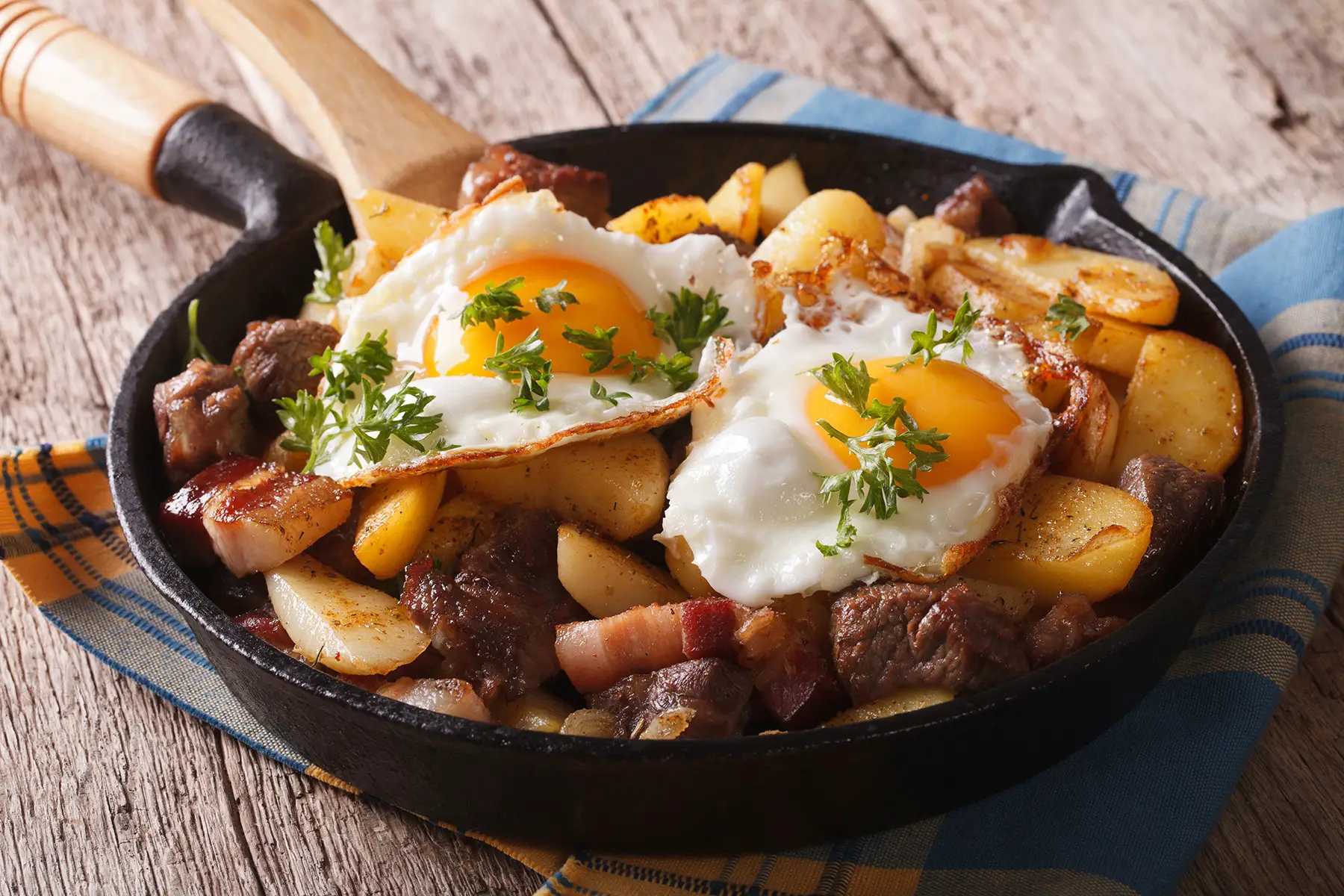
However, like much of Austrian cuisine, many regional variations exist come mealtime. In the popular skiing and hiking region of Tirol, for example, you might sit down to a hearty Tiroler Gröstl for breakfast. This bacon, onion, and potato fry-up is a great way of using up the previous day’s left-over and is best shared from the pan.
Lunch in Austria
Unlike in some European countries, Austrian people tend to eat a warm lunch and a cold dinner. Of course, this depends on preference and appetite, but generally speaking, lunchtime is the time to indulge in a variety of delicious and heart-warming dishes. Käsespätzl, Rindergulasch, and Fleischlaberln are all great options that Austrians particularly cherish during the chilly winter months. A slightly lighter option might be Grammelfleckerl; roasted square-shaped pasta with bacon crackling which comes in a frying pan.

Dinner in Austria
Dinner is generally the main meal for socializing in Austria and it is worth noting that Austrian dining etiquette is fairly formal. Therefore, you should follow rules such as keeping elbows off the table and not waving your cutlery around. Furthermore, you shouldn’t begin eating until everyone has sat down and received their food and the host says “Guten Appetit”.
Austrian people tend to enjoy a cold dinner, which usually consists of cold cuts, cheese, spreads, and dark bread. They might also enjoy a Wurstsalat (sausage salad) prepared with vinegar and onions. Another popular option is a Brettljause; a traditional Tyrolean snack platter that features various cold meats, hams, and cheeses, gherkins, or pickled onions.
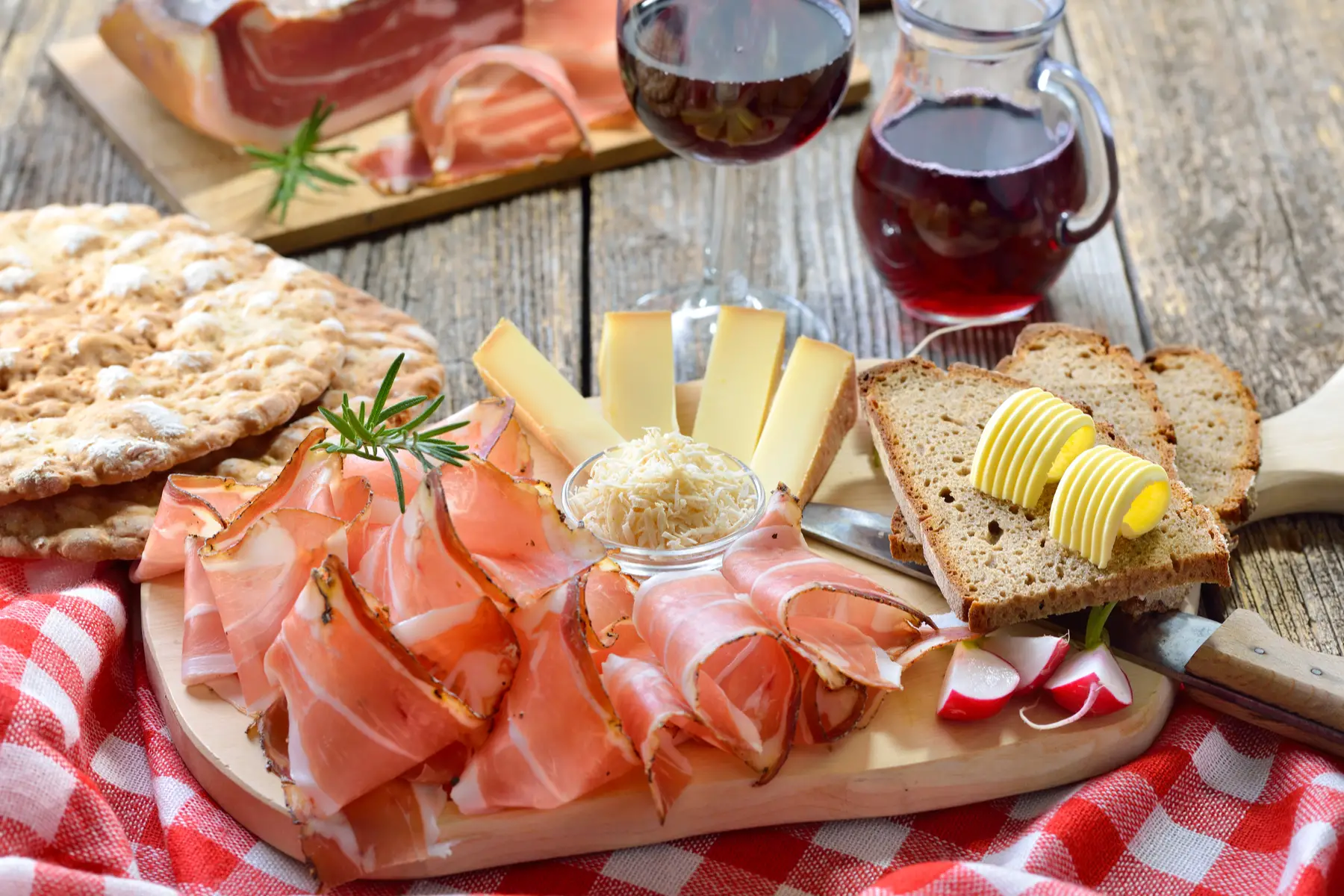
Regional differences in Austrian cuisine
Austria consists of many small regions and each of these has its own cultural identity and specialty cuisine. Vorarlberg, for example, is famous for producing excellent cheeses such as Bergkäse (mountain cheese). It is also home to many cattle farms that help to produce Ländle Kalb (Vorarlberg calf), a regional delicacy. Meanwhile, Burgenland is home to the Neusiedler Lake, a UNESCO World Heritage Site home to an abundance of eels, pikes, and carp. Its warm and dry climate also makes it ideal for growing cereals like spelt.

Similarly, Carinthia produces a wide variety of wild honey and Kärntna Låxn, a kind of brown trout, which live in its lakes. And Salzburg is famous for producing various cheese specialties, as well as potatoes and fish, which thrive in its picturesque alpine lakes. These homegrown ingredients are all incorporated into the regional specialties. And if you’re keen to delve even deeper, Taste of Austria offers some brilliant recipes and information on Austria’s different food regions.
Useful resources
- Taste Atlas – discover more popular Austrian foods and beverages
- Taste of Austria – offers an in-depth insight into the history and culture of Austrian cuisine, including recipes
- Austria.info – an official travel portal that provides an archive of favorite Austrian recipes
